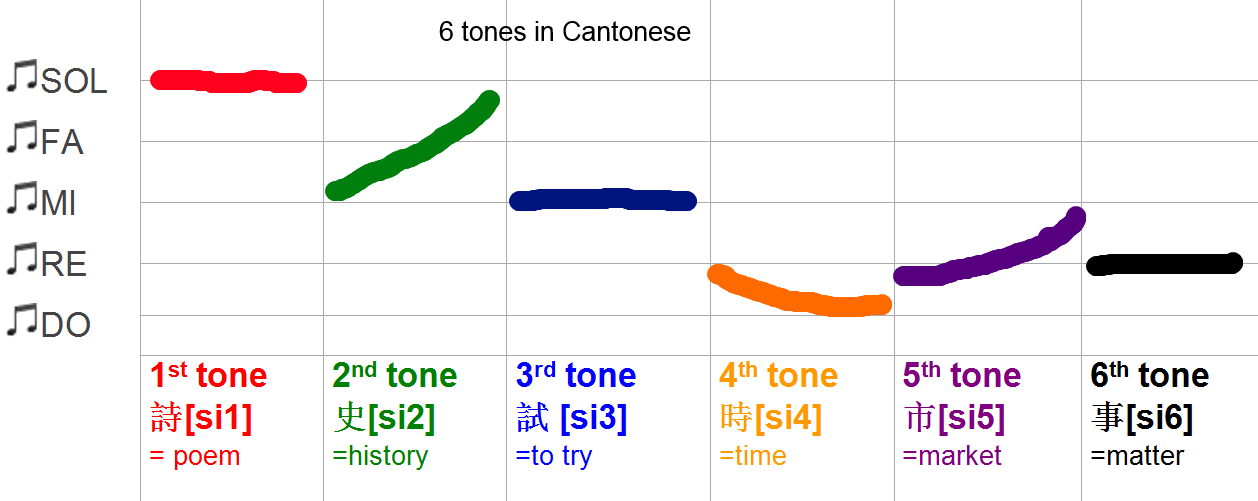Cantonese Ch.1-0 -- Introduction to Phonology & Tones
Golden Rule of becoming a native Cantonese speaker: Tones > Everything!
In this blog, we use Jyutping to indicate the pronunciation of Cantonese characters.
Overview of Cantonese Phonology
Maybe you already know that we use one syllable for each character in Cantonese,
just like all other Chinese languages. It contains 3 crucial parts in order to pronounce the word.
That is the consonances, vowels, and tones.
In Cantonese, there are 19 consonances, 9 vowels and 6 tones.
That creates 1,760 different sounds to cover over 10,000 Chinese Characters.
Every Cantonese consonance and vowel pair can always be described as an Onset-Rime.
Phonology Structure
So what is actually an Onset-Rimes?
An Onset-Rimes is either a consonant-vowel or a consonant-vowel-consonant structure, For example:
consonant-vowel: the word “rich” = 富 (sounds like “foo” in English).consonant-vowel-consonant: the word “bamboo” = 竹 (sounds like “joke” in English).
Tones
Tones are a unique feature of the Chinese language; in Cantonese, it is slightly more fancy than in Mandarin.
But don’t worry, in this Chapter, we will break it down and make it easy for you!

Summary
So today, we’ve learned the structure of Cantonese, and know that it contains Onsets, Rimes, and Tones.
It’s time to learn your first Cantonese phrase!
In Cantonese, the most common greeting we use is Good Morning, that is 早晨!
zou2 san4… How do we pronounce the “z” sound? Now, let’s move on to the next lesson for Onset!
Portal:
- Chapter 0-1: Onset
- Chapter 0-2: Rimes with a & aa
- Chapter 0-3: Rimes with e
- Chapter 0-4: Rimes with i & o
- Chapter 0-5: Rimes with u & yu
- Chapter 0-6: Tones
- Chapter 0-7: Onset, Rimes and Tones (Summary)
Further reading: Jyutping, The linguistic Society of Hong Kong
Cantonese Ch.1-0 -- Introduction to Phonology & Tones